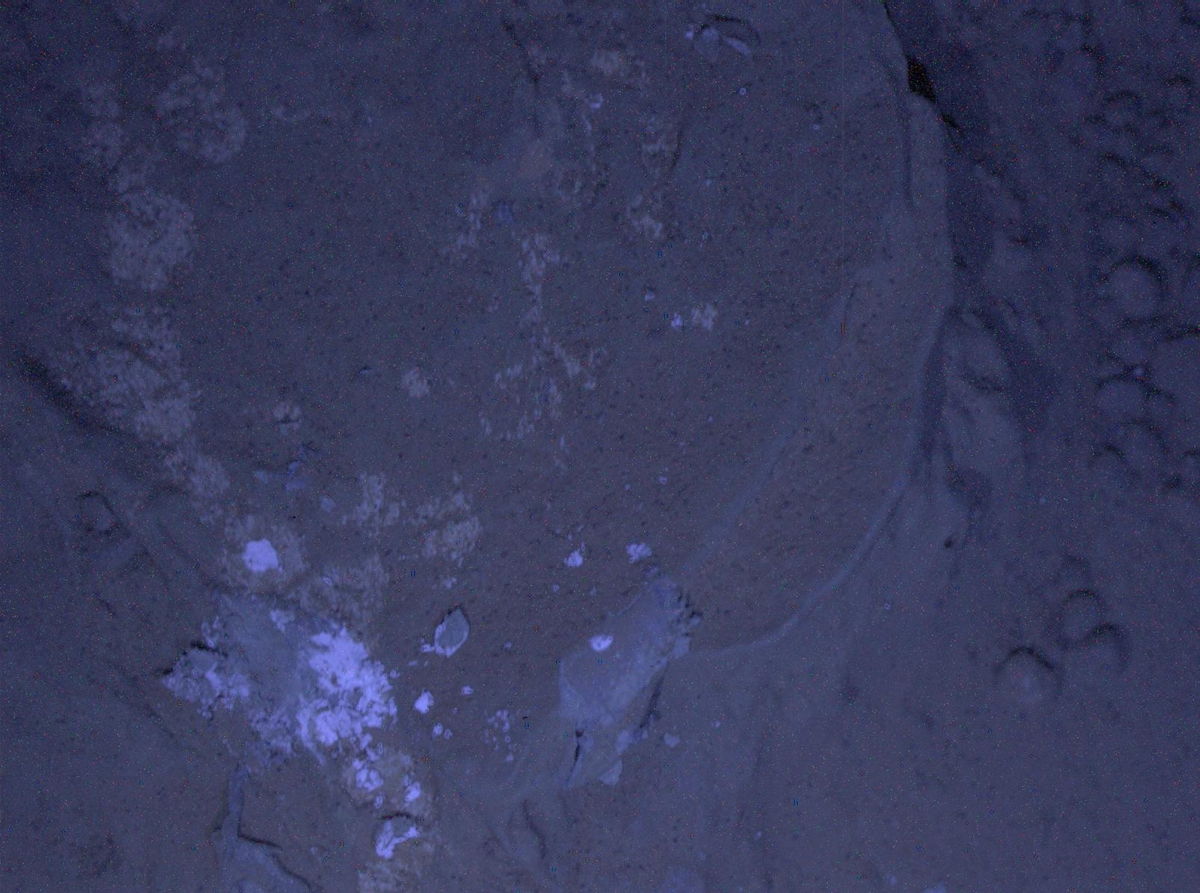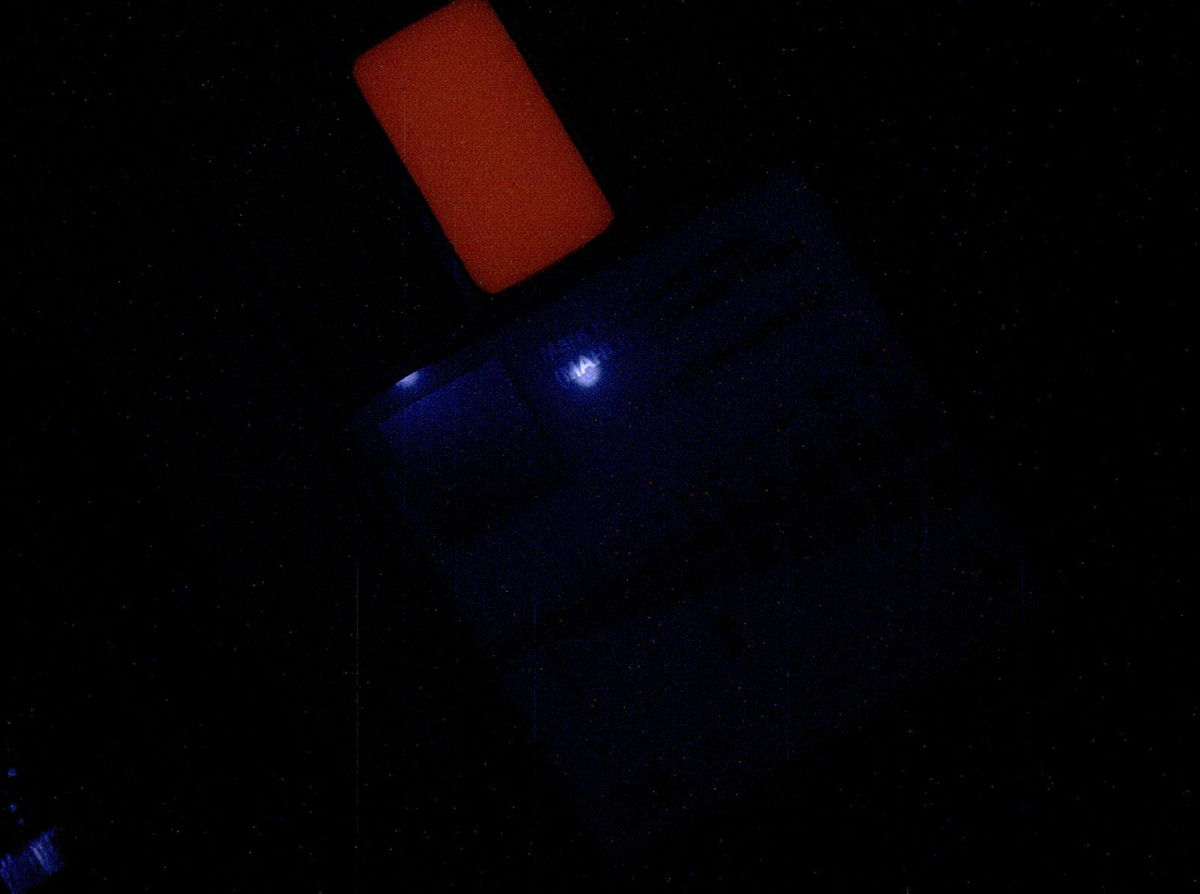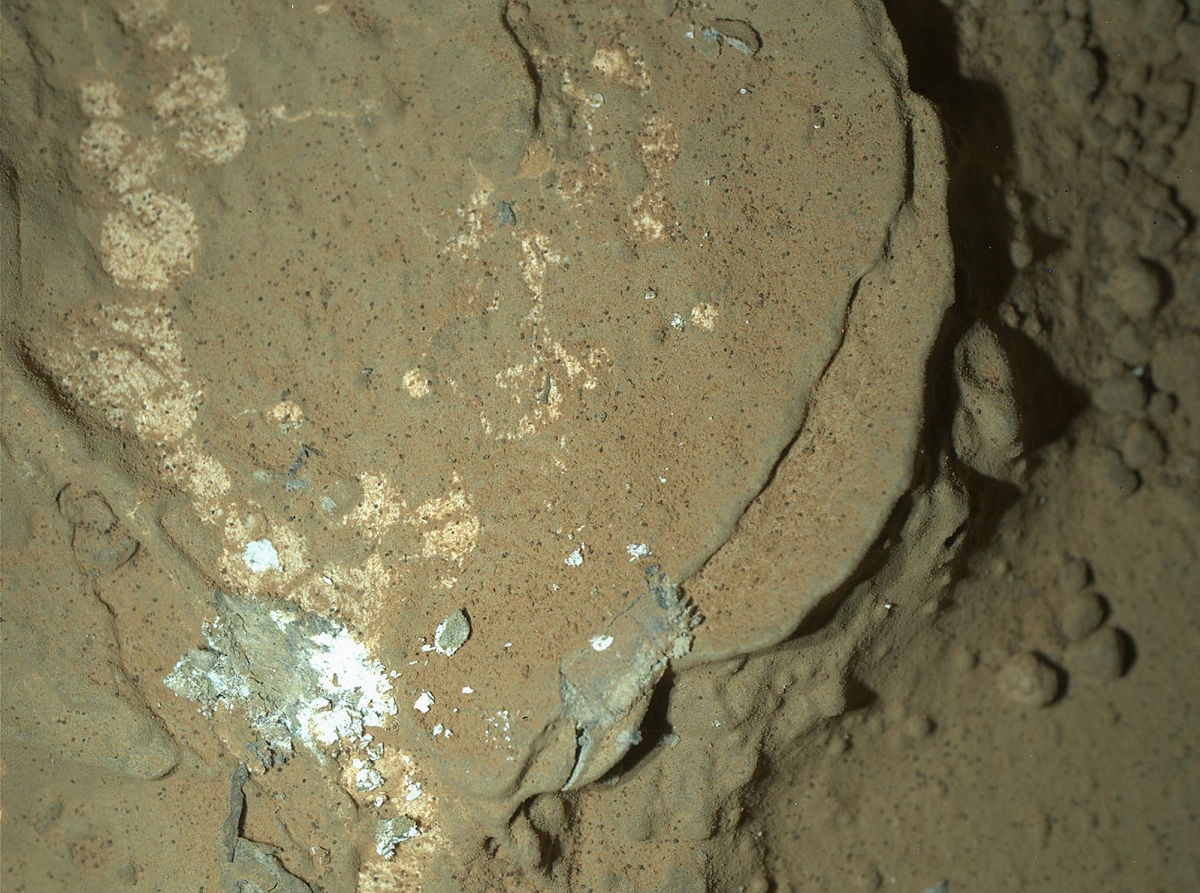Curiosity Rover Snaps 1st Photos of Mars at Night

NASA's Mars rover Curiosity has captured its first nighttime view of the Red Planet using a camera and ultraviolet light on its robotic arm.
Curiosity snapped the Mars night photos in visible and ultraviolet light on Wednesday (Jan. 22) to take an up-close look at a rock called "Sayunei," which the rover had scuffed with a wheel to scratch off surface dust, NASA announced Thursday. One goal was to seek out any fluorescent minerals, they added.

The rover took the photos with the help of small light-emitting diodes (LEDs) that serve as lights for the Mars Hand Lens Imager — or MAHLI — a microscope-like camera at the end of Curiosity's robot arm. The camera has an adjustable focus and several LED light sources for its Martian photography.
"The purpose of acquiring observations under ultraviolet illumination was to look for fluorescent minerals," MAHLI principal investigator Ken Edgett of Malin Space Science Systems in San Diego, Calif., said in a statement Thursday. "These data just arrived this morning. The science team is still assessing the observations. If something looked green, yellow, orange or red under the ultraviolet illumination, that'd be a more clear-cut indicator of fluorescence."
The MAHLI camera is one of 10 science instruments on Curiosity, which is a car-size rover capable of examining the surface of Mars in unprecedented detail.

Curiosity is currently exploring a shallow depression on Mars that mission scientists have named Yellowknife Bay. The nighttime photo target Sayunei is near the site of where the rover is expected to use its drill for the first time on Mars.
The $2.5 billion Mars rover Curiosity landed inside the vast Gale Crater on Aug. 5 to begin a two-year primary mission aimed at determining if the region could have ever supported microbial life. After leaving Yellowknife Bay, the rover will continue on toward a destination called Glenelg, which is located near the base of a 3-mile (5 kilometers) mountain rising up from the center of Gale Crater.
Get the Space.com Newsletter
Breaking space news, the latest updates on rocket launches, skywatching events and more!
You can follow SPACE.com Managing Editor Tariq Malik on Twitter @tariqjmalik. Follow SPACE.com for the latest in space science and exploration news on Twitter @Spacedotcom and on Facebook.

Join our Space Forums to keep talking space on the latest missions, night sky and more! And if you have a news tip, correction or comment, let us know at: community@space.com.

Tariq is the Editor-in-Chief of Space.com and joined the team in 2001, first as an intern and staff writer, and later as an editor. He covers human spaceflight, exploration and space science, as well as skywatching and entertainment. He became Space.com's Managing Editor in 2009 and Editor-in-Chief in 2019. Before joining Space.com, Tariq was a staff reporter for The Los Angeles Times covering education and city beats in La Habra, Fullerton and Huntington Beach. In October 2022, Tariq received the Harry Kolcum Award for excellence in space reporting from the National Space Club Florida Committee. He is also an Eagle Scout (yes, he has the Space Exploration merit badge) and went to Space Camp four times as a kid and a fifth time as an adult. He has journalism degrees from the University of Southern California and New York University. You can find Tariq at Space.com and as the co-host to the This Week In Space podcast with space historian Rod Pyle on the TWiT network. To see his latest project, you can follow Tariq on Twitter @tariqjmalik.









